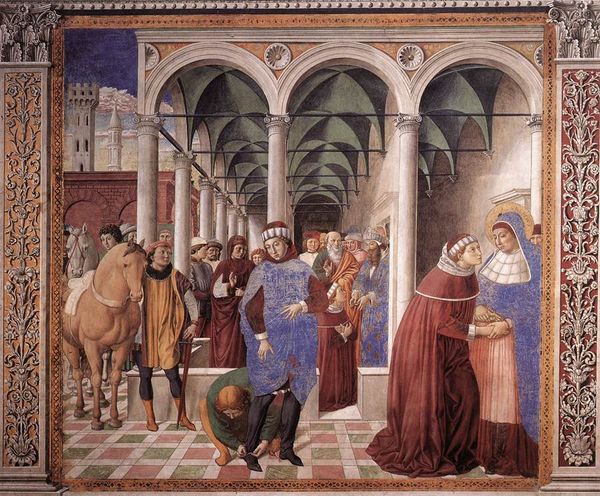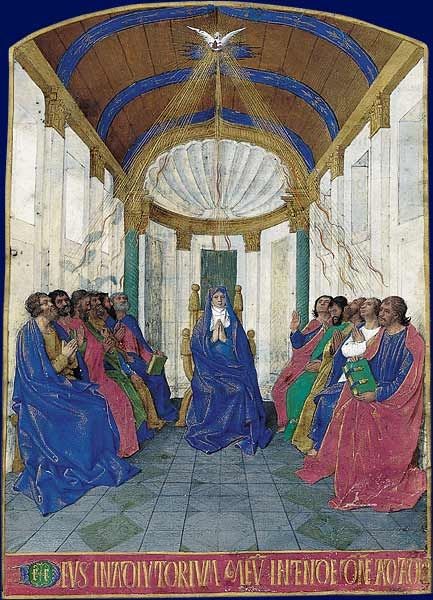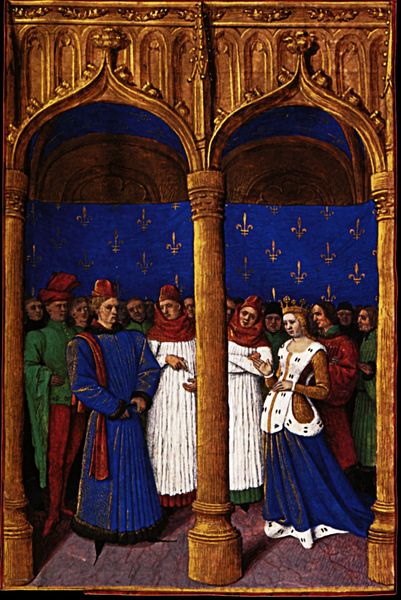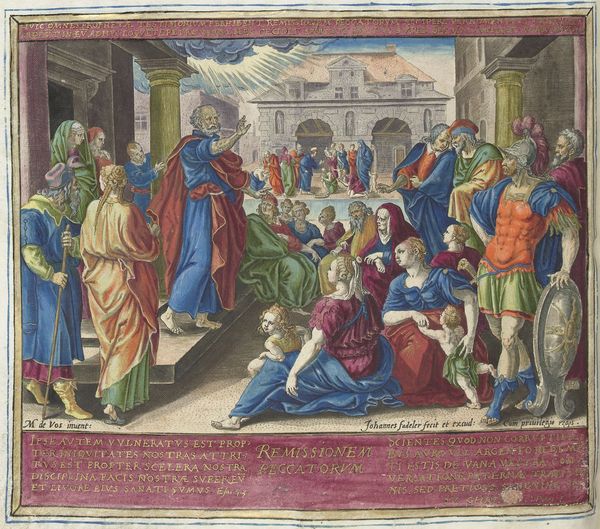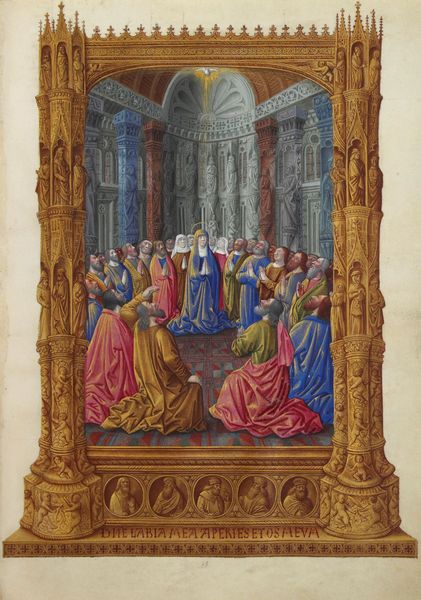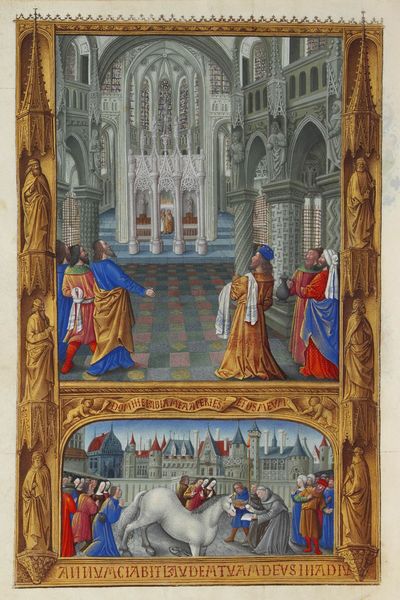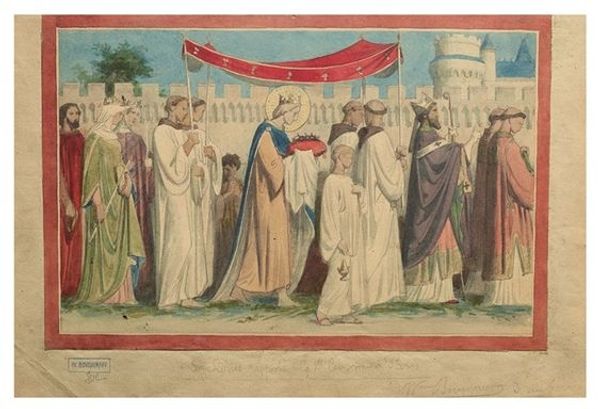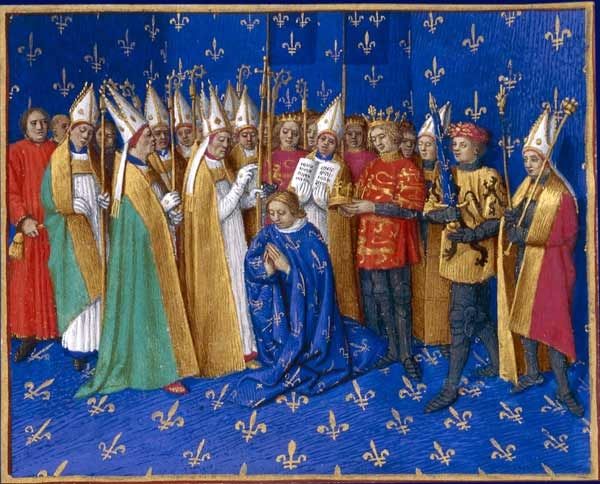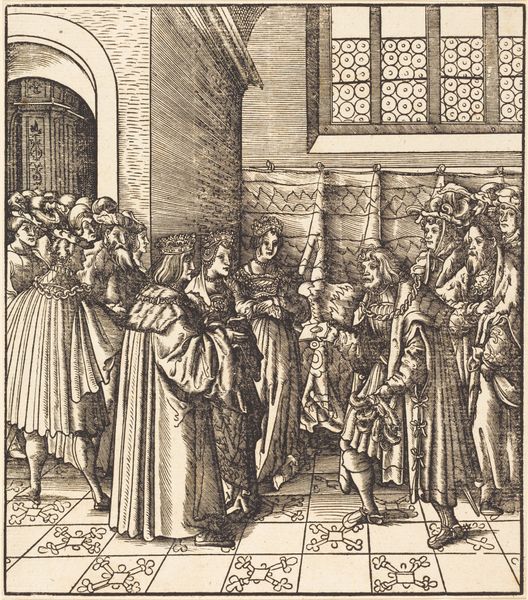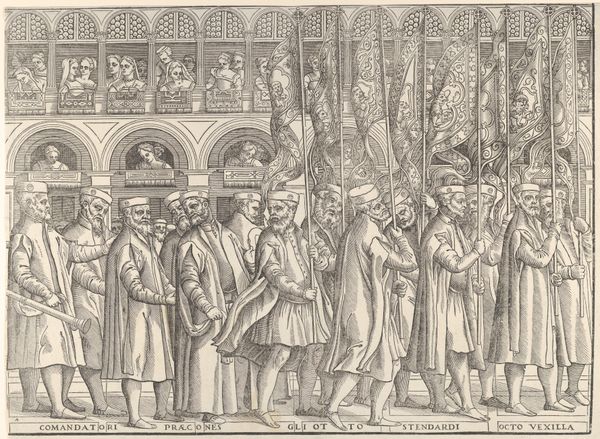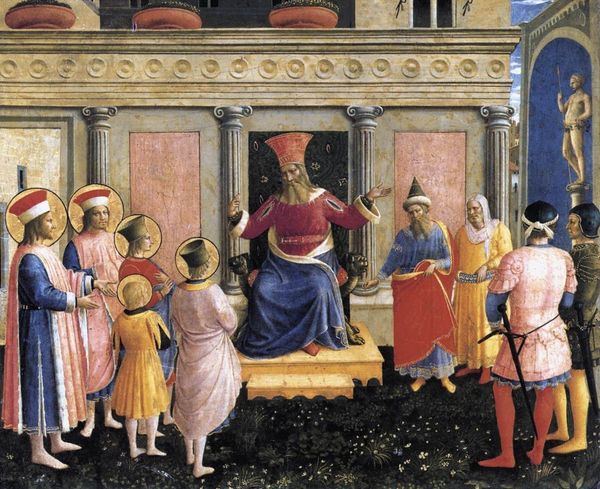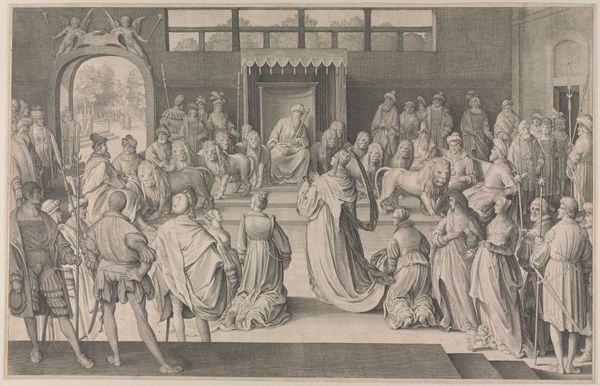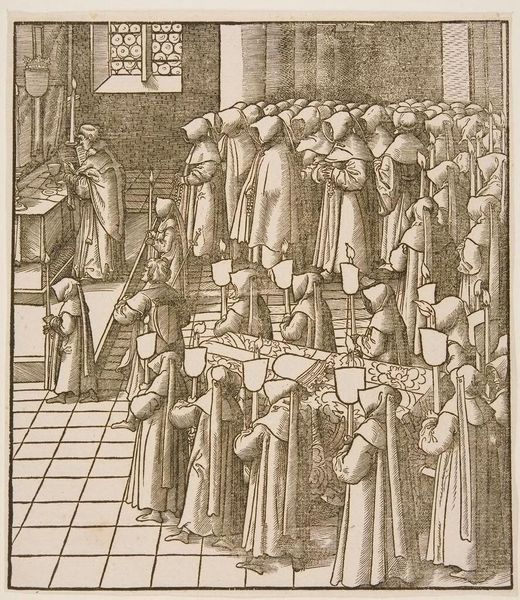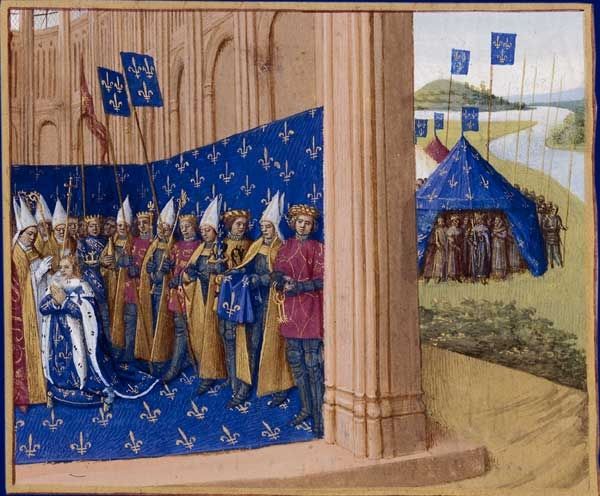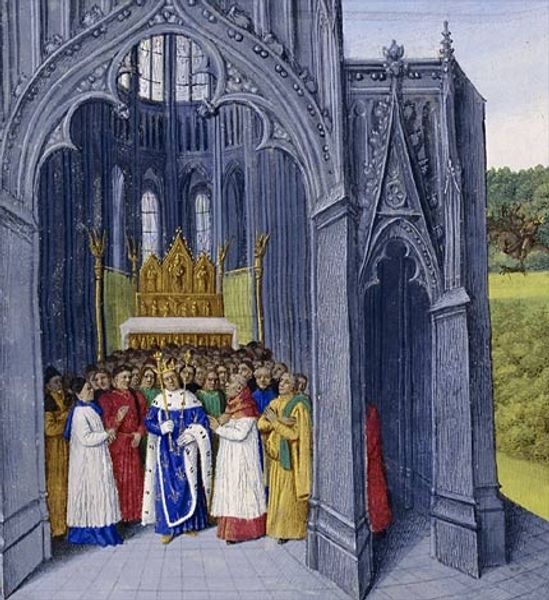
Coronation of Charlemagne 1460
0:00
0:00
jeanfouquet
Bibliothèque nationale de France (BnF), Paris, France
tempera, painting
#
portrait
#
medieval
#
tempera
#
painting
#
strong focal point
#
oil painting
#
history-painting
#
international-gothic
#
portrait art
#
miniature
Copyright: Public domain
Jean Fouquet, around the 15th century, painted the 'Coronation of Charlemagne.' This artwork exists within a time of shifting power dynamics, where the church’s influence intertwined with the ambitions of rulers. Fouquet painted Charlemagne’s coronation, but he dressed him in the attire of the French monarchy, with the Fleur-de-lis pattern, a symbol of the French royalty. Charlemagne kneels as the Pope places the crown upon his head, marking a moment of submission to both divine and papal authority. What does it mean when temporal power is derived from the church? The coronation of Charlemagne, becomes a statement on the nature of power, legitimacy, and the complex relationship between church and state. It invites us to reflect on how institutions shape identities and the narratives we inherit.
Comments
No comments
Be the first to comment and join the conversation on the ultimate creative platform.
